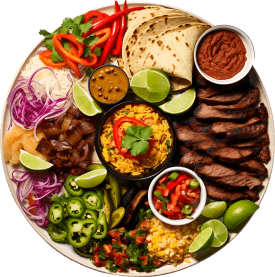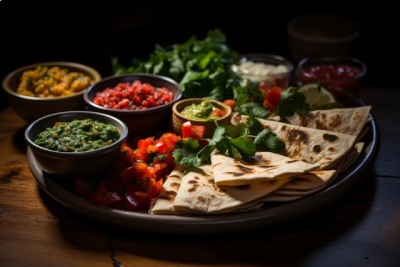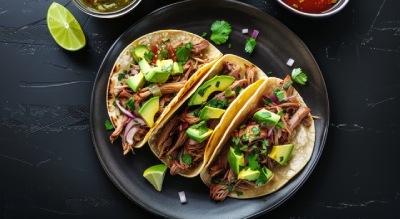All About Mexican Cuisine – History, Regional Dishes, and Its Rise in Australia

One can never resist Mexican cuisine. The salads will excite the palate, the crunchy tacos will delight any soul, and a generous bowl of birria will truly make it an experience which is fast becoming part of the vast and multicultural Australian culinary scene. If you want a fast, wholesome meal for the family or are planning a party to have everyone over, there are ample quick-to-make heritage Mexican dishes at your service.
There are traditional recipes for which local Mexican spices and peppers are a must, and the preparation involves foods that are maybe cheap and in huge supply in Mexico but that are a little difficult in Australia to come by. Thereafter, some creativity and a sense of resourcefulness pay to take these recipes up another notch. You can go with a totally classic burrito by finding crushed refried beans, fresh guacamole, and maybe even homemade tortillas, or some key core ingredients could be swapped for others that will give new life to a dish and your stamp of style. And these foods are just the kind to go for on those hot summer days when you fancy spice, zest, and heat.
This website plans to explore amazing worldwide recipes and make them work with things available here in Australia. Along the way, cultural insights will be thrown in, cooking techniques shared, and ingredient substitutions provided so that you can enjoy authentic tastes without all the pressure.
Mexican Cuisine Roots and History
We can trace the roots of Mexican foods back to the Aztec and Mayan civilizations, and many of the key resources were staples in the diets of those peoples. Maize, beans, chilli peppers, avocado and corn were prominent in the pre-European colonization of Mexico. These ancient cultures feasted on tamale pozole and even made their guacamole tortillas. A lesser-known fact is that the Aztecs were also among the first people in the world to cultivate and eat chocolate. Though they often served this as a frothy beverage.
The Spanish conquest of Mexico was led by Hernan Cortes in 1519-21 and resulted in the establishment of New Spain and a significant decline in the Aztec population. Cortes also formed alliances with indigenous groups, such as the Tlaxcalans, who helped him overthrow the Aztecs. The food culture was not lost during this time but evolved dramatically. The Spanish introduced pork, beef, cheese and rice to the prominent indigenous food traditions. These food cultures converged over the next few centuries to create an expansive and rich tradition in Mexico.
Exceptional Regional Dishes and Lesser Known Treasures

Also, not far inside the kitchen are many specialties and regional dishes but scarcely known outside of Mexico. Each of these somewhat closed treats shows that each side of the country has its local version, having been affected mostly by the cuisine and biodiversity of the area. Oaxaca, the land of seven moles, is a wild array of complicated sauces with layers that involve the roasting of chillies with one or more other ingredients like spices, nuts, or even chocolate. At the same time, Yucatan is all about slow pork roasting like cochinita pibil with its sour marinades and achiote pastes.
Moving north to Baja, California, the seafood scene is extensive, with some innovative fusions and food arrangements. The very mention of fish tacos, seafood tostadas, and chocolate clams beckons attention as much as their mouth-watering descriptions. Then there is a concoction of traditional preparations for ceviche, chiles en Nogada, carnitas implementations, tamales, quesadillas, and enchiladas with some daring chilaquiles on the side. This opulent spread of dishes, along with various preparations, makes Mexican cuisine and culinary tradition the best in adaptability.
Key Ingredients That Define the Cuisine

The majority of Mexican foods use a lot of the same ingredients, and Aussies who can source these can make all kinds of Mexican or Mexican-esque dishes. Maize (or corn), tamales and masa dough are three of the most important ingredients. Maize and corn starch are practically sacred in Mexican cuisine and can be seen as the palette on which everything else can be built. Then, flavours can be infused with exotic chillis, adding heat, smokiness, and depth that give the Mexican dishes their unique tastes. Having beans and rice at hand is always useful, as these two "sidekicks" can balance out the meals and give them substance.
Tacos are a hugely popular food that can be made in a myriad of ways. Using pork with a dried mixture of dried guajillo chillies, garlic, and pineapple makes Tacos al pastor, a taco with a hearty yet tangy flavour. The Carne asada tacos have a more citrusy sour zest to them, with a combination of lime, cumin and garlic coating juicy slices of beef and a helping of coriander on top. Tamales require steaming masa dough in corn husks and can be filled with chicken, green tomatillo sauce, or any mole. The moles themselves can be made from virtually any ingredients you have in your pantry. Avocados, tomatoes, coriander, lime, cumin and garlic can come in handy but don't rule out toasted nuts, cinnamon or even some dark chocolate.
Mexican Food in Australia

In recent years, Mexican food has made a solid mark in Australia, evolving beyond fast-food burrito chains into something much richer and more authentic. Cities like Sydney and Melbourne now boast a wave of taquerias, mezcalerias, and pop-ups run by Mexican chefs or well-travelled Aussies with a passion for the real thing. People are seeking out masa-based tortillas, not flour wraps; birria tacos dipped in consommé, not just nachos; and house-fermented salsas made with native chillies.
Part of this growth comes from our appetite for fresh, bold flavours. Something Mexican cuisine delivers in spades. But it's also tied to the broader fusion trend. Chefs here have been quick to experiment, blending Mexican ingredients with Australian produce and Asian cooking styles. Think miso-mole marinades, kangaroo tacos with native herbs, or corn esquites with a dash of lemon myrtle. You're not diluting the culture but adding more depth to the ever-evolving food tradition.
Mexican Food is Here to Stay
Mexican cuisine is just an explosive feast of flavours. Beyond the food, it's the experience of a culture and perfect for sharing with your family and friends. For Australians, it's a chance to dig into something that feels both new and deeply rooted at the same time. Whether you're hosting a backyard fiesta, exploring street food in Oaxaca, or just trying your hand at making tamales from scratch, Mexican food has a way of pulling you in and keeping you there.
